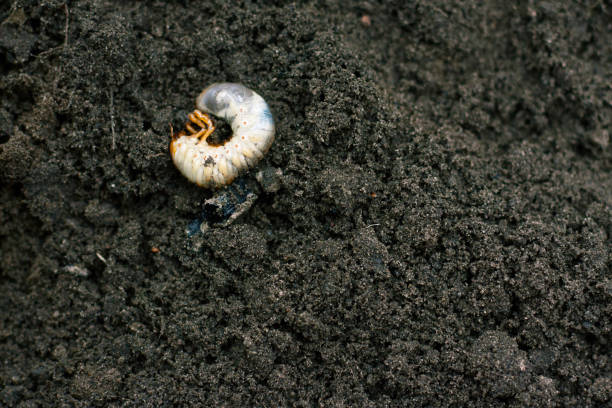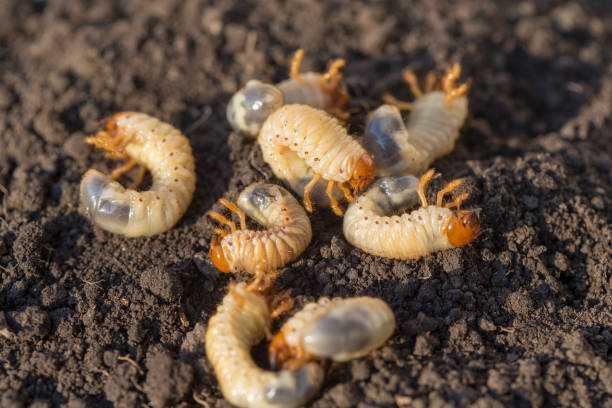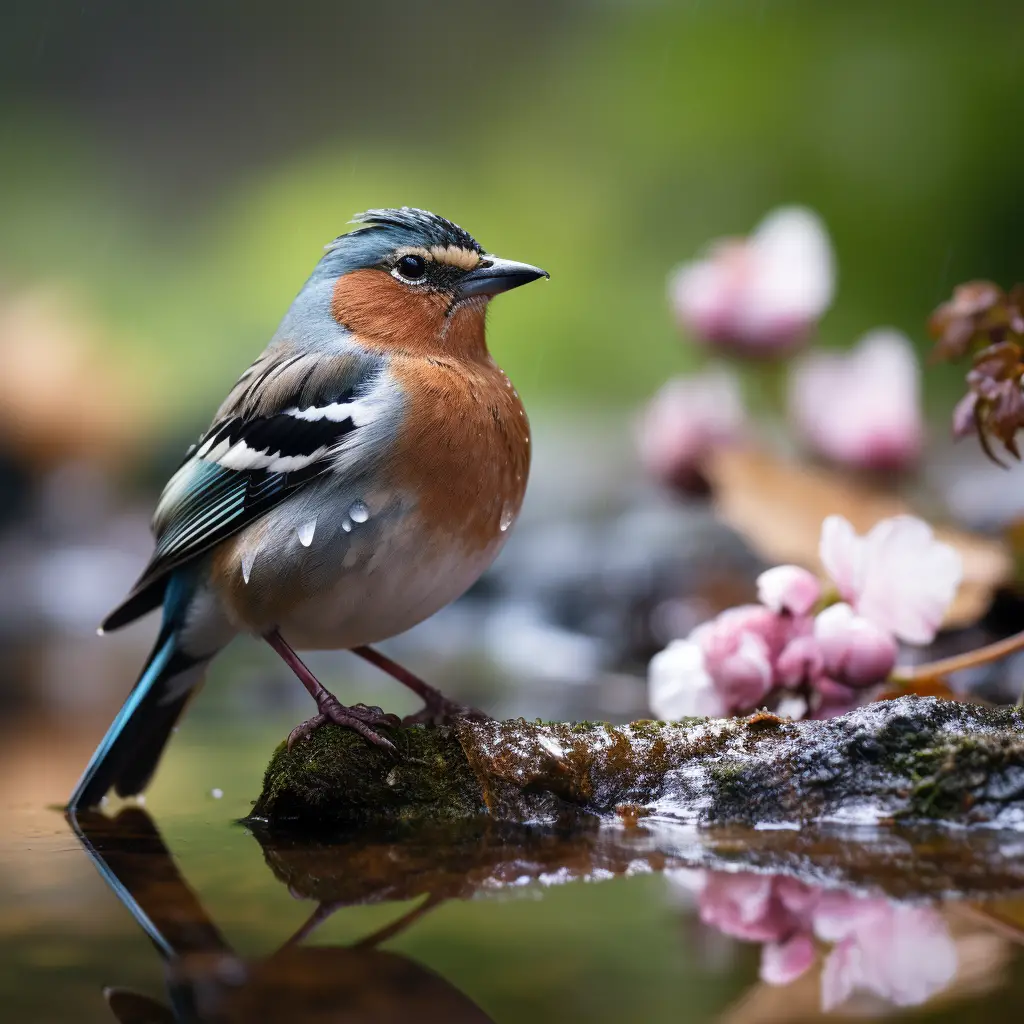
Introduction
Grubs are the larvae of beetles, and they can cause significant damage to trees by feeding on their roots and disrupting the flow of water and nutrients. In this article, we will discuss effective ways to eliminate grubs on trees and prevent further damage to your trees.
A. Definition of Grubs and their Impact on Trees
Grubs are the worm-like larvae of beetles that live in the soil and feed on the roots of plants, including trees.
When grubs feed on the roots of trees, they disrupt the flow of water and nutrients, which can cause the tree to become weak and brittle. This can lead to yellowing or wilting leaves, dead or brown patches on the lawn around the tree, and weakened or damaged tree branches. If left untreated, the infestation can lead to the death of the tree.
B. Importance of Eliminating Grubs on Trees
Eliminating grubs on trees is important for several reasons. First, it helps protect the health of the tree by preventing damage to the roots and ensuring the flow of water and nutrients.
Second, it helps maintain the overall health of your lawn and garden by preventing damage to other plants in the area. Finally, eliminating grubs can help prevent further infestations by disrupting the life cycle of the beetles that lay the eggs. By taking action to eliminate grubs on trees, you can protect your trees and help ensure they stay healthy and beautiful for years to come.
Identifying Grub Infestations on Trees

The first step in eliminating grubs on trees is to identify if there is a grub infestation. It’s important to know the signs of a grub infestation so you can take action before the damage becomes too severe.
Some common signs of grub infestations on trees include yellowing or wilting leaves, dead or brown patches on the lawn around the tree, and weakened or damaged tree branches. Another telltale sign is the presence of adult beetles in the area. These beetles lay eggs that hatch into grubs, which then feed on the tree roots.
It’s also important to know what type of grub is present as different types of grubs can have different behaviors and life cycles. Some of the most common types of grubs that infest trees include Japanese beetle grubs, European chafer grubs, and Oriental beetle grubs.
Japanese beetle grubs are often found in the summer months and can cause significant damage to turfgrass and ornamental plants, as well as trees. European chafer grubs are known to feed on the roots of trees, causing them to become weak and brittle. Oriental beetle grubs are common in the northeastern United States and feed on the roots of trees, causing significant damage to the tree’s root system.
How to Get Rid of Grubs on Trees

Once you have identified a grub infestation on your trees, it’s important to take action to eliminate the grubs. There are several methods you can use to get rid of grubs on trees, including natural methods, chemical treatments, and prevention techniques.
Natural Methods
One of the most effective natural methods for eliminating grubs on trees is handpicking them. This method involves physically removing the grubs from the tree by digging into the soil around the base of the tree and picking them off. This can be time-consuming but can be effective for small infestations.
Another natural method is using beneficial nematodes, which are microscopic worms that can feed on the grubs and kill them. Beneficial nematodes can be applied to the soil around the tree to eliminate the grubs.
Chemical Treatments
Chemical treatments can also be effective in eliminating grubs on trees. Insecticides are a common type of chemical treatment and can be applied to the soil around the tree to kill the grubs. Systemic treatments are another type of chemical treatment that can be applied to the tree’s leaves, where they are absorbed by the tree and can kill the grubs as they feed on the roots.
It’s important to note that chemical treatments can have an impact on beneficial insects, so it’s important to use them carefully and only as a last resort.
Prevention Techniques
Prevention techniques are one of the most effective ways to eliminate grubs on trees. By taking steps to prevent grub infestations, you can avoid the need for more aggressive treatments down the road. Here are some prevention techniques you can use to protect your trees from grubs:
Maintain Healthy Trees
Maintaining healthy trees is one of the best ways to prevent grub infestations. Healthy trees are better able to resist damage from grubs, so regular fertilization and watering can help keep trees healthy. It’s also important to keep the area around the tree free of debris and other obstacles that can interfere with the flow of water and nutrients to the tree roots.
Use Physical Barriers
Physical barriers can also be effective in preventing grub infestations. Installing a mesh or netting around the base of the tree can prevent adult beetles from laying eggs near the tree. This is particularly effective for trees that are prone to grub infestations, such as fruit trees or ornamental trees.
Rotate Crops
If you have a garden or farm, rotating crops can help prevent grub infestations. This is because different types of crops attract different types of beetles, so rotating crops can help disrupt the beetle’s life cycle and prevent them from laying eggs in the same area year after year.
Practice Good Lawn Maintenance
Good lawn maintenance is also important for preventing grub infestations. Grubs are attracted to lawns that are poorly maintained, so regular mowing and fertilization can help keep grubs at bay. It’s also important to remove any thatch or debris from the lawn, as this can provide a breeding ground for beetles.
Consider Biological Control
Biological control is another option for preventing grub infestations. This involves using natural predators or parasites to control the beetle population. One example of biological control is using parasitic wasps, which can lay their eggs inside beetle larvae, killing them and preventing further damage to the tree. This method is typically more environmentally friendly than using chemical treatments.
By implementing these prevention techniques, you can help protect your trees from grub infestations and prevent further damage to your lawn and garden. While these methods may not be 100% effective in all cases, they can go a long way in reducing the risk of grub infestations and ensuring the health of your trees.
Best Practices for Eliminating Grubs on Trees

To ensure the most effective elimination of grubs on trees, it’s important to follow best practices when using any of the methods discussed above. Here are some best practices to keep in mind:
Timing
Timing is critical when it comes to eliminating grubs, as different types of grubs have different life cycles. It’s important to identify the type of grub that is present and then apply the appropriate treatment at the right time. For example, some chemical treatments are only effective when applied during the early stages of the grub’s life cycle.
Proper Application
Proper application of treatments is also important. Follow the instructions carefully, and apply the treatment evenly and thoroughly to the affected area. This will ensure that the treatment reaches all of the grubs and is effective in eliminating them. It’s also important to wear gloves and protective clothing when using chemical treatments to avoid skin irritation or other adverse reactions.
Regular Monitoring
Regular monitoring of trees is important for several reasons. It can help you catch grub infestations early on, which can be easier to eliminate than more severe infestations. Regular monitoring can also help you assess the effectiveness of the treatment and make any necessary adjustments. In addition, regular monitoring can help you identify any other issues that may be affecting the health of the tree.
Safety Precautions
It’s important to take safety precautions when eliminating grubs on trees. If you are using chemical treatments, be sure to follow the instructions carefully and wear protective clothing. It’s also important to keep children and pets away from the treatment area until it is safe.
Seek Professional Help
If you are unsure about how to eliminate grubs on your trees or if you have a severe infestation, it may be best to seek professional help. A certified arborist or landscaper can assess the situation and recommend the most effective treatment options for your trees. They can also provide guidance on prevention techniques to help reduce the risk of future infestations.
By following these best practices, you can help ensure the most effective elimination of grubs on your trees and prevent further damage to your lawn and garden. While it may take some effort and time, taking action to eliminate grubs on trees is an important step in protecting the health of your trees and preserving the beauty of your landscape.
Conclusion
Grubs can cause significant damage to trees if left untreated. Fortunately, there are several effective methods for eliminating grubs on trees, including natural methods, chemical treatments, and prevention techniques. When eliminating grubs on trees, it’s important to identify the type of grub present and to use the appropriate treatment at the right time. Following best practices for eliminating grubs, such as proper application of treatments and regular monitoring of trees, can help ensure the most effective elimination of grubs and prevent further damage to trees. By taking action to eliminate grubs on trees, you can protect your trees and help ensure they stay healthy and beautiful for years to come.





